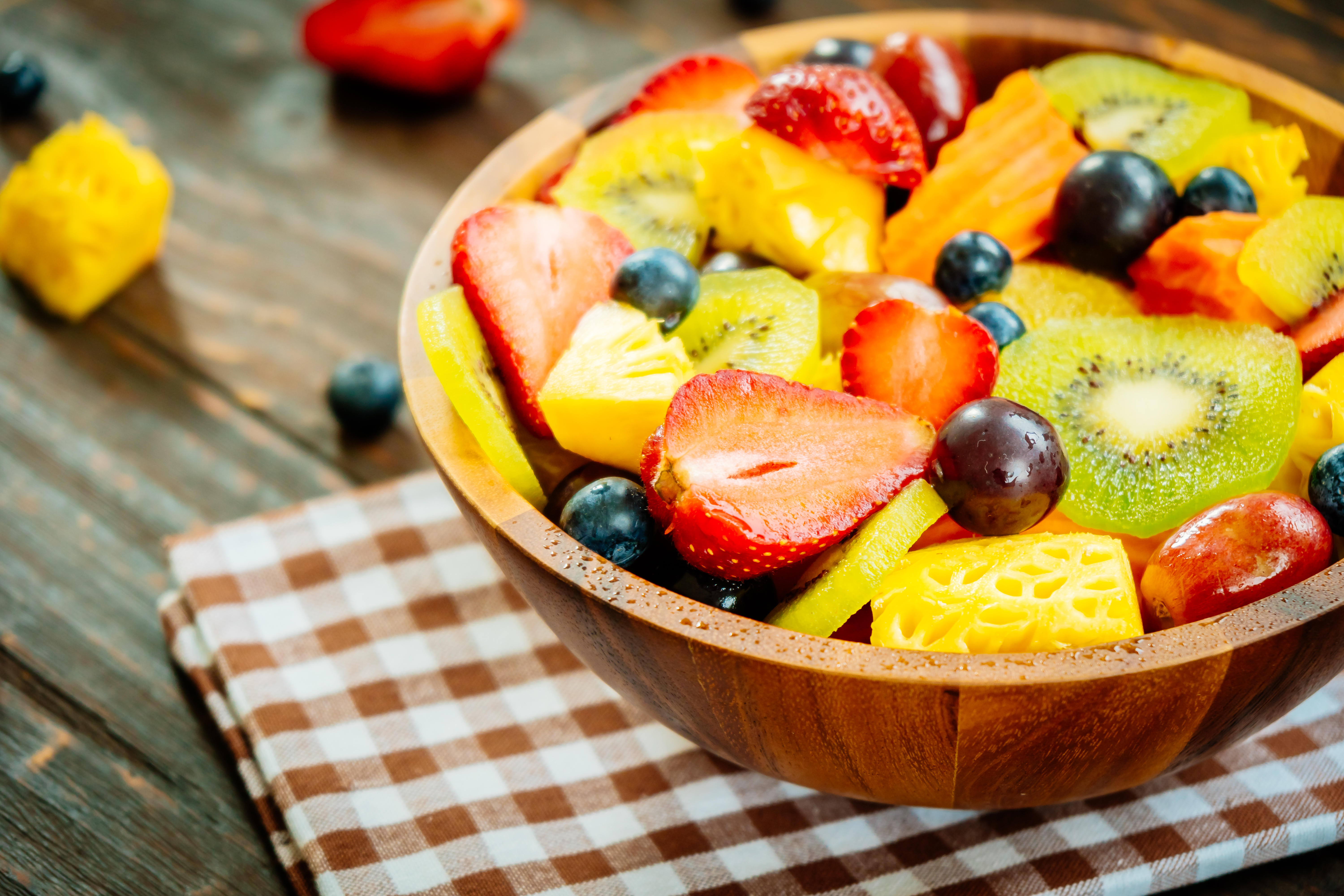 Return to Articles
Return to Articles
7.01.2024
MyPlate for Families: Resources to Help You and Your Children Eat Healthy

Remember the Food Guide Pyramid? It was great for its time, but much has changed since 1992. USDA invites you to update to MyPlate. It’s the modern way to eat better every day. It’s easy to use, customizable, based on science, and an overall great way to enjoy healthier eating.
Launched in 2011, MyPlate’s symbol is a simple visual reminder to choose a variety of foods throughout the day and throughout the week. It represents what and how much to eat from each of the food groups over the course of the day, whether you eat on a plate, from a bowl, or another way.
MyPlate replaced the Food Guide Pyramid, which was made before the internet. With the advancement of technology, MyPlate takes what we’ve learned from the Food Pyramid and now provides a personalized approach to healthy eating to help you meet your goals.
You can customize MyPlate to fit your dietary needs, preferences, cultural traditions, and budget ― so you can enjoy your favorite recipes and eat the healthy foods you love.
The Five Food Groups on MyPlate
- Fruits - The Fruit Group includes all fruits and 100% fruit juice. Fruits may be fresh, frozen, canned, or dried/dehydrated. Fruits can be eaten whole, cut up, puréed (mashed), or cooked. At least half of the recommended amount of fruit eaten should come from whole fruit, rather than 100% fruit juice.
- Vegetables - Any vegetable or 100% vegetable juice counts as part of the Vegetable Group. Vegetables may be raw or cooked and can be fresh, frozen, canned, or dried. They can be whole, cut-up, or puréed (mashed). Vegetables are organized into 5 subgroups based on their nutrients: dark green; red and orange; beans, peas, and lentils; starchy; and other vegetables.
- Grains - Foods made from wheat, rice, oats, cornmeal, barley, or another cereal grain is a grain product. Bread, pasta, breakfast cereals, grits, and tortillas are examples of grain products. Foods such as popcorn, rice, and oatmeal are also included in the Grains Group.
- Protein Foods - Protein Foods include all foods made from seafood; meat, poultry, and eggs; beans, peas, and lentils; and nuts, seeds, and soy products. Beans, peas, and lentils are also part of the Vegetable Group. Eat a variety of protein foods to get more of the nutrients your body needs. Meat and poultry choices should be lean or low-fat, like 93% lean ground beef, pork loin, and skinless chicken breasts. Choose seafood options that are higher in healthy fatty acids (called omega-3s) and lower in methylmercury, such as salmon, anchovies, and trout. If you are vegetarian or vegan, the advice to eat meat, poultry, and seafood does not apply to you. Vegetarian protein options include beans, peas, lentils, nuts, seeds, and soy products.
- Dairy and Fortified Soy Alternatives - The Dairy Group includes milk, yogurt, cheese, lactose-free milk and fortified soy milk and yogurt. The Dairy Group does not include foods made from milk that have little calcium and a high fat content. Examples of this are cream cheese, sour cream, cream, and butter.
Why Healthy Eating is Important for Young Children
Healthy eating is important for young children because it helps with their growth and development, and can reduce the risk of chronic diseases later in life. A healthy diet provides children with essential nutrients for physical and cognitive development, and can help them maintain a healthy weight, have strong bones and teeth, and boost immunity. It can also improve mental health, and help children feel good and have energy for school and play.
5 Key Benefits of Healthy Eating
- Stable energy
- Strong bones and teeth
- Improved mental health
- Maintaining a healthy weight
- Preventing chronic disease
Tools provided through MyPlate and First 5 Nevada can help families get the support and resources they need to support healthy development!
MyPlate Tools and Resources:
- MyPlate Plan is personalized based on your age, height, weight, and other basic factors. It is available in English and Spanish.
- Start Simple mobile app lets you set daily food goals and track progress in real-time.
- Shop Simple tool offers cost-saving tips and suggestions for preparing delicious, healthy meals on a budget.
- MyPlate Quiz, available in English and Spanish, is a fun way to test your nutrition IQ and offers personalized resources based on your score.
- MyPlate Kitchen provides recipes and resources to support building healthy and budget-friendly meals. Nutrition analysis provided on recipes to help consumers choose recipes that meet nutrition goals.
- MyPlate Alexa skill gives you healthy eating tips on your Amazon Alexa device or on your smartphone or tablet using the Amazon Alexa app.
- Food Group Quizzes test your knowledge of the 5 food groups.
First 5 Nevada Tools and Resources:
- See What You Qualify For – Use this simple screening tool to see what programs and services you and your family may qualify for, including food assistance programs such as WIC and SNAP.
- Featured Resource: Healthy Kids Resource Center at the UNR Extension – The Healthy Kids Resource Center is a one-stop shop for evidence-based research, resources, and more that focus on obesity prevention.
- News and Articles – Learn more about how to help your family eat healthy and make the most out of your food budget. Visit the website to see a list of articles and sign up for our newsletter to receive up to date information, right in your inbox!
Information and images about the “MyPlate” program were retrieved from https://www.myplate.gov/ and are attributed to the U.S. Department of Agriculture.






